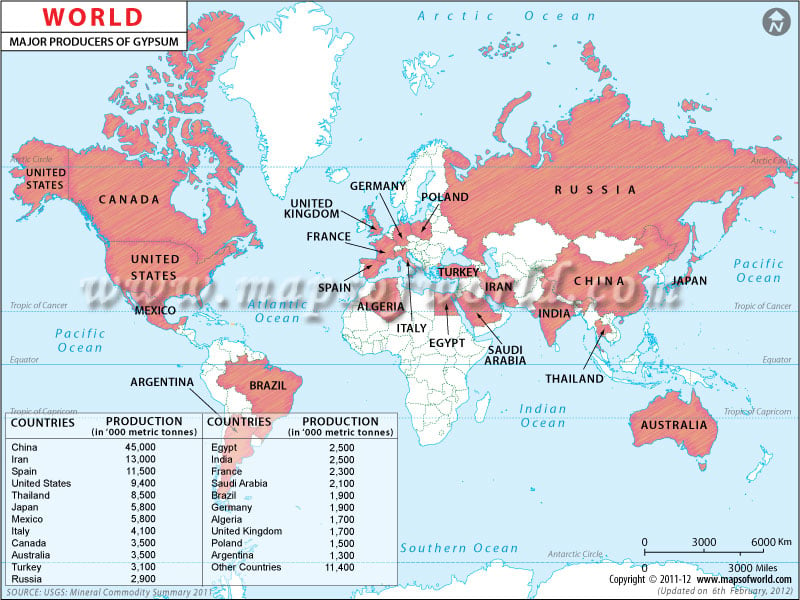Gypsum is an abundant mineral that was formed millions of years ago due to evaporation of shallow seas. Gypsum is a common, very soft sulfate mineral composed of calcium sulfate dihydrate. The second softest mineral, it is found in alabaster.
Gypsum is extensively found in sedimentary rocks. It is deposited from saline lake and sea water, as well as in hot springs from volcanic vapors. Gypsum is also found disseminated in limestones, dolomitic limestones, and some shales.
The World Map of Gypsum producing Countries shows a list of countries that have large gypsum deposits and produce the mineral in large quantities.
As shown in the map, China is the largest producer of gypsum; in 2010 it produced an estimated 45,000 metric tonnes of gypsum. The second-largest gypsum producer is Iran followed by Spain, the United States, Thailand, Japan, Mexico, Italy, Canada, Australia, Turkey, Russia, Egypt, India, France, Saudi Arabia, Brazil, Germany, Algeria, United Kingdom, Poland, and Argentina.
In the United States, commercial sedimentary gypsum deposits occur in New York and Michigan. In France, gypsum is common in the marls and clays of the Paris basin, especially in Montmartre.
Crude gypsum is used as a fluxing agent, fertilizer, and as a filler in paper and textiles. It is also often used as a retarder in portland cement.
Major Producers of Gypsum in world-2010
| Country | Production (Thousand Metric Tonnes) |
| China | 45,000 |
| Iran | 13,000 |
| Spain | 11,500 |
| United States | 9,400 |
| Thailand | 8,500 |
| Japan | 5,800 |
| Mexico | 5,800 |
| Italy | 4,100 |
| Canada | 3,500 |
| Australia | 3,500 |
| Turkey | 3,100 |
| Russia | 2,900 |
| Egypt | 2,500 |
| India | 2,500 |
| France | 2,300 |
| Saudi Arabia | 2,100 |
| Brazil | 1,900 |
| Germany | 1,900 |
| Algeria | 1,700 |
| United Kingdom | 1,700 |
| Poland | 1,500 |
| Argentina | 1,300 |
| Other Countries | 11,400 |

